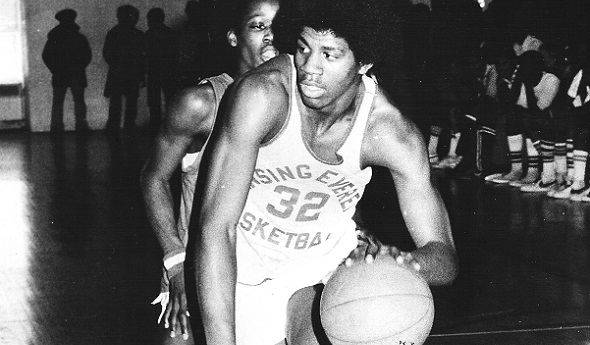
'Retro' Award Rewards 1st Hoops Legends
January 4, 2017
By Ron Pesch
Special for Second Half
Before the start of the MHSAA’s 2009 Boys Basketball finals, Basketball Coaches Association of Michigan director Tom Hursey stopped by my seat at Michigan State University’s Breslin Center to say hello.
Our chat would alter a decade of my Michigan winters.
Somewhere between hello and goodbye, our chat included conversation on one of my favorite BCAM ventures. In 1981, the Michigan High School Basketball Coaches Association, as BCAM was once known, named its first “Mr. Basketball.” I was two years out of high school when Lansing Eastern’s Sam Vincent edged Eric Turner of Flint Central for that first award. Designed to honor the state’s top senior, the award was named in honor of Detroit Free Press writer Hal Schram. “The Swami,” as he was nicknamed, Schram began covering high school sports for the newspaper in 1945.
The 2009 selection was 6-foot-9 Derrick Nix of Detroit Pershing. I mentioned my affinity for the Mr. Basketball program to Tom, but stated that I always thought it a crime that the award didn’t start years earlier, at least when Michigan hoop fans became infatuated with a kid nicknamed “Magic.”
Earvin Johnson prepped at Lansing Everett and was the talk of the state in basketball circles before becoming a household name during his time at Michigan State and with the Los Angeles Lakers. Earlier this year, ESPN named Johnson the greatest point guard to ever play the game. Tom noted that “Magic” was really the inspiration for the “Mr. Basketball” award.
Then I posed a question to Tom.
What about creating a “new” award, designed to honor those greats from the past?
As my hobby of researching the history of high school sports in Michigan and beyond had grown over the years, I’d found the Great Lakes state had always produced shining stars on the basketball court. The crime was that the “Mr. Basketball” award hadn’t been launched many years before.
Harry Kipke, was perhaps the state’s first true basketball star. He won 12 varsity letters at Lansing Central and guided the basketball team to the semifinal round of the state tournament in 1920 as a senior, before heading to the University of Michigan where he earned letters in football, basketball and baseball. After stops at the University of Missouri and Michigan State, Kipke would serve as Michigan’s football coach, guiding the Wolverines to two national gridiron championships.
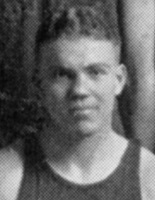 As a junior, the basketball antics of Grand Rapids Union’s Royal “Red” Cherry captured the state’s attention when he led Union to the state basketball championship. Considered the best all-around player of the tournament, Cherry led the team to a second consecutive title as a senior. He, too, attended Michigan, earning laurels on the basketball court and the baseball diamond.
As a junior, the basketball antics of Grand Rapids Union’s Royal “Red” Cherry captured the state’s attention when he led Union to the state basketball championship. Considered the best all-around player of the tournament, Cherry led the team to a second consecutive title as a senior. He, too, attended Michigan, earning laurels on the basketball court and the baseball diamond.
Many other legends of the hardcourt populated Michigan’s past: Saginaw’s Ernie Thompson; the Burton brothers, M.C. and Ed, of Muskegon Heights; Detroit Pershing’s Ralph Simpson and Spencer Haywood; Dave DeBusschere of Detroit Austin Catholic; Willie Betts and Blanche Martin of River Rouge; Ron Kramer of East Detroit; Benton Harbor’s Chet Walker and L.C. Bowen.
After a few weeks of research, discussion and thought, Tom agreed, and over the next several months the framework for the “Retro Mr. Basketball” project was developed
The idea was to try and mimic the current model. Only seniors, and their high school basketball careers, should be considered. While any “senior” player would be eligible, a ballot of the state’s elite would comprise the candidates for the award. Like their modern-day equivalents, where the events of life that would follow high school graduation had yet to occur, post-high school life would be disregarded as much as possible for “Retro” candidates.
Finally, the program would follow a 10-year arc, kicking off in the spring of 2010. This December marks my eighth year of research tied to the mission. Two more will follow.
Since the Schram “Mr. Basketball” award began in 1981, the “Retro” award would honor basketball players from the years 1920 through 1980. That first year, a ballot comprised of players from the years that ended in zero - 1920, 1930, 1940, 1950, 1960, 1970 and 1980 – was created. A senior for each year would be named the winner of the “Retro” award. That meant with the selection of “Mr. Basketball” and the six “Retro” winners for the years 1929, 1939, 1949, 1959, 1969 and 1979, scheduled for the spring of 2019, BCAM would be able to point to a combined list of Mr. Basketballs totaling 100 of the state’s finest.
To identify each year’s award winner, a committee of veteran BCAM members was formed to study a ballot of candidates and select a winner.
Technology, combined with scanning old-fashioned reels of microfilm, has helped with research of potential candidates. In those very early years, personal statistics were rarely kept. Rather, an assessment of a player’s skills, tied to the position he played, often served as a means to identify an area’s top athletes. Tournament play was often the only time an athlete’s abilities were on display to a larger audience. Scouring newspaper articles for all-tournament teams and yearbooks for additional details and years of study helped uncover the state’s top senior players. Understanding the game and its evolution was important. The center jump after each basket emphasized the importance of a tall, skilled center in those games played before the winter of 1938-39.
Beginning in 1935, all-state teams began to appear in state newspapers. Eventually, the Detroit Free Press, the Detroit Times, the Detroit News, The Associated Press and even United Press International became involved in identifying the state’s top basketball players and naming all-state squads. Much work is involved in parsing the 15,811 names (not including honorable mentions) found in those lists. When duplicates are removed, the names of 8,430 prep players remain spread over the 61 years that mark the “Retro” field of possible candidates.
Research to identify seniors, players named by multiple media outlets, and mini biographies are compiled for the top players. The field of candidates is then narrowed to 10 or fewer. Over state championship weekend, the ballots are brought to the BCAM committee for discussion, and finalists are named for each year. Finally, one player is named for each eligible season.
Like the modern day award, the selection may create some controversy. Some amazing ballplayers have landed on the finalist list, but were denied the Hal Schram Mr. Basketball award: Traverse City’s Dan Majerle, Roy Marble of Flint Beecher, Detroit Southwestern’s Jalen Rose, Detroit Northern’s Derrick Coleman and Draymond Green of Saginaw are among a few.
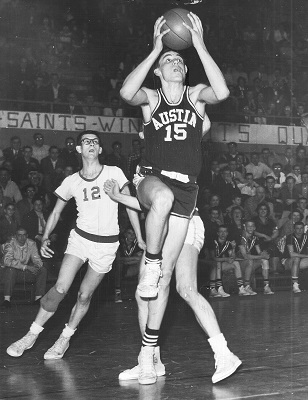 The same applies to the “Retro” list. Fennville’s Richie Jordan, Robert “Bubbles” Hawkins from Detroit Pershing, Dennis Bankey of Detroit St. Thomas, Bill Chmielewski of Detroit Redeemer, Highland Park’s Terry Duerod and Detroit Kettering’s Lindsay Hairston all have been honored on the finalist lists, but fell short of the top prize.
The same applies to the “Retro” list. Fennville’s Richie Jordan, Robert “Bubbles” Hawkins from Detroit Pershing, Dennis Bankey of Detroit St. Thomas, Bill Chmielewski of Detroit Redeemer, Highland Park’s Terry Duerod and Detroit Kettering’s Lindsay Hairston all have been honored on the finalist lists, but fell short of the top prize.
In many cases, Michigan was loaded with prep talent – it’s tough to name Roy Marble Mr. Basketball when Flint Northwestern’s Glen Rice was on the same ballot, or Rose the state’s best when Country Day’s Chris Webber was another candidate. While the “Fennville Flash” amazed the state with his eye-popping statistics in 1965, Bowen led Benton Harbor to back-to-back Class A titles. Named an all-state basketball player as a junior, Hairston grew an inch and improved his game as a senior, but Pontiac Central’s “Campy” Russell dominated headlines that season, and was the “Retro” Mr. Basketball selection for 1971.
In some cases, it’s a challenge to look at the final balloting results without judging selections based on future basketball success. That certainly is the case with 2008. That season, Michigan’s Mr. Basketball award went to 6-foot guard Brad Redford, who posted incredible back-to-back high school seasons at Frankenmuth. Runner-up to the award that year was Saginaw’s Green. Considering Green’s success in the NBA, that’s hard for many to believe.
While the debates may never be settled, the beauty of Schram and “Retro” Mr. Basketball balloting can be found in the argument. With those disputes, people recall, research and learn about Michigan’s incredible prep basketball past.
The remaining three years of the “Retro” project will include many more legends of Michigan High School basketball, including, among others, DeBusschere, Walker, Haywood and Simpson.
This season, that “Magic” kid will be one of the names among the mix. Forty years after high school graduation, will he earn the honor that eluded him in high school, only because the honor didn’t yet exist?
 Ron Pesch has taken an active role in researching the history of MHSAA events since 1985 and began writing for MHSAA Finals programs in 1986, adding additional features and "flashbacks" in 1992. He inherited the title of MHSAA historian from the late Dick Kishpaugh following the 1993-94 school year, and resides in Muskegon. Contact him at [email protected] with ideas for historical articles.
Ron Pesch has taken an active role in researching the history of MHSAA events since 1985 and began writing for MHSAA Finals programs in 1986, adding additional features and "flashbacks" in 1992. He inherited the title of MHSAA historian from the late Dick Kishpaugh following the 1993-94 school year, and resides in Muskegon. Contact him at [email protected] with ideas for historical articles.
PHOTOS: (Top) Lansing Everett’s Earvin Johnson drives around a defender during his celebrated high school career. (Middle) Grand Rapids Union’s Royal “Red” Cherry. (Below) Detroit Austin Catholic’s Dave DeBusschere drives to the hoop as an opponent gets in position to rebound. (Photos from MHSAA and Ron Pesch historical files.)
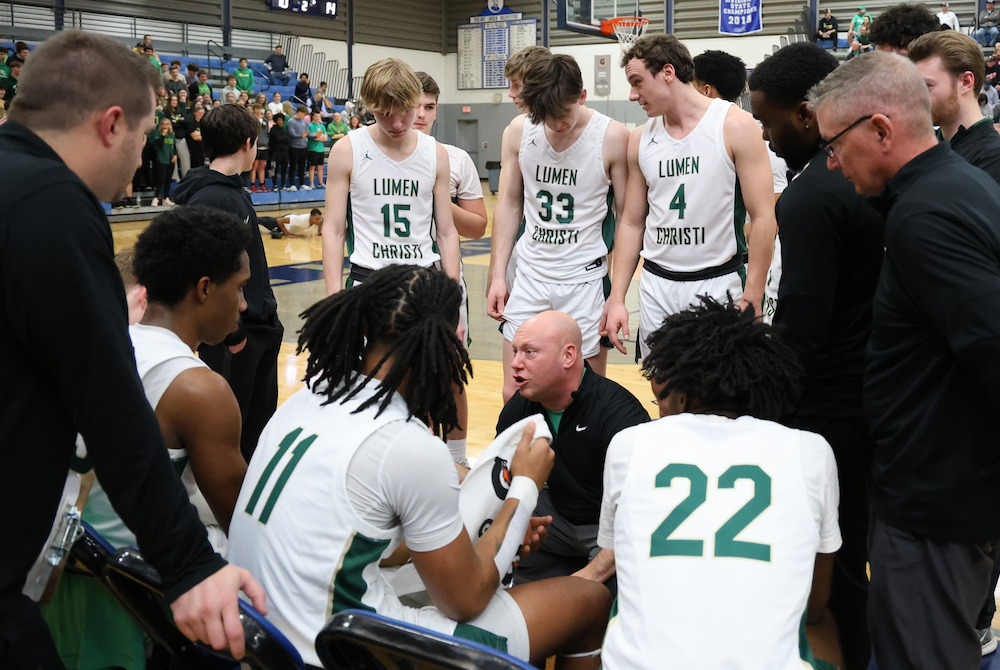
Lumen Christi Building Toward Banner Aspirations under Tropea's Guidance
By
Doug Donnelly
Special for MHSAA.com
March 26, 2024
Among the first things Josh Tropea noticed when he took the boys basketball coaching job at Jackson Lumen Christi were all the state championship banners.
 Not for boys basketball, but for multiple other sports.
Not for boys basketball, but for multiple other sports.
“I’m a confident coach, confident in my abilities and knowledge,” Tropea said. “You have to have some self-confidence to come in here when there are 54 state championships in other sports and none in basketball.”
Tropea wants to change that. In his second year at the Jackson County school, he came close, getting the Titans to the Division 3 Quarterfinals. The Regional title was the program’s first since 2013. He feels, however, the foundation has been set for what he thinks will be a bright future.
“We are super deep,” Tropea said. “Our freshman class is very good, the eighth-grade class is very good. We have talent coming for years. I believe we will have the ability to play for state championships in the future. We were there this year, I think.”
Tropea has made a habit of resurrecting programs during his coaching career. The South Lyon native started at Walled Lake Western while still in college. He had brief coaching stints at Whitmore Lake and Howell before settling in at Milan, where he built that school into a Class B powerhouse, winning the Finals championship in 2013-14 and going 92-27.
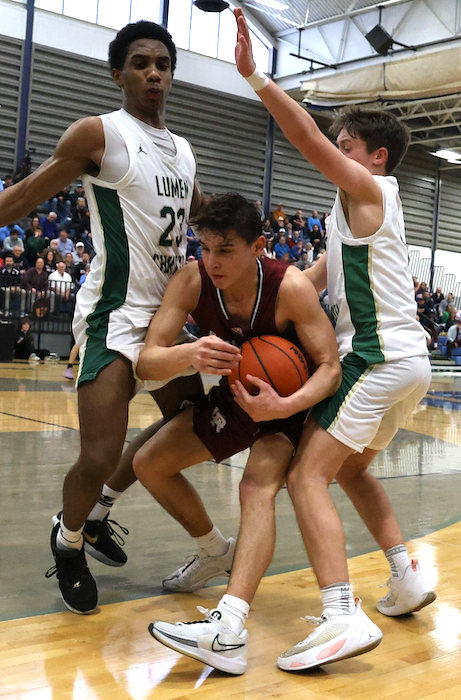 He left Milan for a job at Chelsea, did that for a couple of seasons and left to become an assistant coach at Spring Arbor University. He came back to Chelsea for two seasons before resigning and landing at Lumen Christi two years ago.
He left Milan for a job at Chelsea, did that for a couple of seasons and left to become an assistant coach at Spring Arbor University. He came back to Chelsea for two seasons before resigning and landing at Lumen Christi two years ago.
The Titans have had moderate success over the years, winning several conference and District titles and six Regional championships in all. They have just one trip to the Semifinals, that coming back in 1975. In 2016 the Titans fell on hard times, winning just once and starting a seven-year span of failing to reach .500 once.
Enter Tropea and an 11-win improvement from 3-18 in 2021-22 to 14-10 last season.
This year’s team went 22-5 and became just the seventh in school history to win 20 games in a season.
There were several big moments, and the Lumen Christi gym was packed night in and night out.
“I told people when I got here that I’ll know I’m successful when I can pack this gym. It seats about 3,500,” Tropea said. “When we walked out of the locker room to play Hanover-Horton in the Regional, every seat in the gym was filled. Where there weren’t bleachers, there were people standing. It was unbelievable. In the second half of the game, you couldn’t hear. Everything had to be communicated through hand signals. That was a huge moment. My players may never play in front of anything like that again in their lives.”
Lumen Christi has been a football powerhouse for decades, and Tropea is fine with that. This past season all of his players but three were from the football team that won the Division 7 championship.
Tropea said it was an easy transition to their winter sport.
“I coach great athletes who are prepared for success, who are coached hard, watch film and know how to compete,” Tropea said. “The football program takes all the hard stuff off my plate. I just get to coach basketball.”
The next piece to sustaining a top-five team, he believes, is improving the players’ skill level. For that, he’ll lean on a coaching staff that includes Tyler Aldridge, the varsity coach for five seasons before Tropea arrived.
“Tyler is incredible with the kids, great at skill work,” he said.
Tropea joined a coaching fraternity at Lumen Christi. The school’s first basketball coach was Justin Perticone, followed by Mike Ramker, Dan Crowley, Rick Karasek and, before Aldridge, Pat Neville.
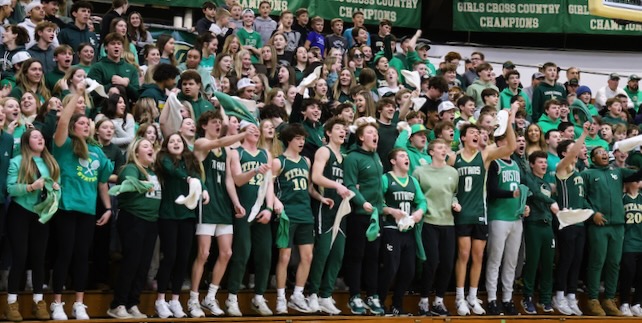 “At one point or another, all six of those guys were at practice or at our games this year,” Tropea said. “It’s such a cool thing. Coach Ramker was in the front row for all our games. After the games, I hang out with some of our former coaches. I’m in a golf league with one of them. We are all connected and support one another. It truly is a brotherhood here. Once you are here, you are part of the Lumen family.”
“At one point or another, all six of those guys were at practice or at our games this year,” Tropea said. “It’s such a cool thing. Coach Ramker was in the front row for all our games. After the games, I hang out with some of our former coaches. I’m in a golf league with one of them. We are all connected and support one another. It truly is a brotherhood here. Once you are here, you are part of the Lumen family.”
Ramker called it unique. He coached Ann Arbor St. Thomas to a 1974 Class D championship, then Lumen Christi from 1977 to 1994. He returned for one more season in 2009-10 and was coaching in the program until last year.
“The school definitely has built that culture,” Ramker said. “That’s one of the things I’ve always loved about Lumen Christi.”
A tough non-league slate helped the Titans get on a roll when the postseason began.
Kalamazoo Hackett Catholic Prep, Adrian Lenawee Christian, Michigan Center and eventual Division 3 champion Niles Brandywine were on the regular-season schedule, along with Catholic High School League foe Riverview Gabriel Richard, another Division 3 Semifinal team that Lumen Christi played three times, winning once.
“We feel like we are way more prepared going into the state playoffs than the teams we are playing,” Tropea said.
As he builds next year’s schedule, the goal remains to get ready for the MHSAA Tournament.
“We return six kids who played major minutes for us and four guys who started for us,” he said. “Our young guys will be in tough situations next year, but I know they are ready.
“The seniors I have returning next year were on a 14-win team as sophomores, and a 22-win team as a junior. We’ve changed our mentality. We’re not playing for league titles. Our focus is on March, and our kids have bought into that. If we lose a game in the middle of the season, that’s not going to bother them.”
 Doug Donnelly has served as a sports and news reporter and city editor over 25 years, writing for the Daily Chief-Union in Upper Sandusky, Ohio from 1992-1995, the Monroe Evening News from 1995-2012 and the Adrian Daily Telegram since 2013. He's also written a book on high school basketball in Monroe County and compiles record books for various schools in southeast Michigan. E-mail him at [email protected] with story ideas for Jackson, Washtenaw, Hillsdale, Lenawee and Monroe counties.
Doug Donnelly has served as a sports and news reporter and city editor over 25 years, writing for the Daily Chief-Union in Upper Sandusky, Ohio from 1992-1995, the Monroe Evening News from 1995-2012 and the Adrian Daily Telegram since 2013. He's also written a book on high school basketball in Monroe County and compiles record books for various schools in southeast Michigan. E-mail him at [email protected] with story ideas for Jackson, Washtenaw, Hillsdale, Lenawee and Monroe counties.
PHOTOS (Top) Jackson Lumen Christi coach Josh Tropea, kneeling, huddles with his team this season. (Middle) Lumen players, including Lundon Hampton (23) apply defensive pressure. (Below) A full bleachers of Titans fans cheer on their team. (Photos by Rick Bradley.)

